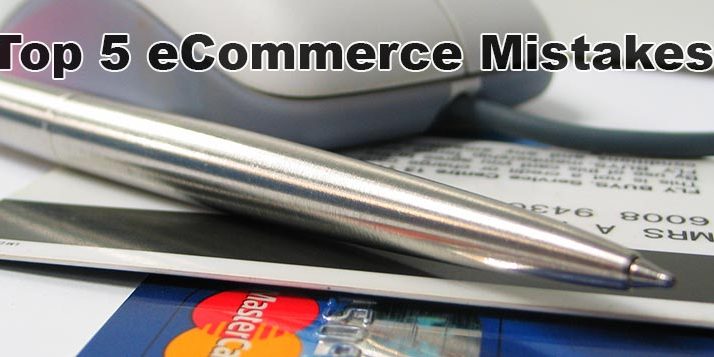With an online business and e-commerce websites, mistakes with website design can be costly and crippling to a business. There are many individuals and companies that claim to have the proper skills to design and develop websites, but this is not always the truth.
Often investors and entrepreneurs fail to hire the right staff to establish their e-commerce websites properly and with quality. Not all design is the same and not all programming is with quality. E-commerce websites must be properly setup, with the right technologies, design, architecture, and so much more.
Investors and entrepreneurs most likely would not rush the opening and setup of a traditional brick and mortar store. It is usually understood that proper planning, interior decorating, and setup is required for a successful opening. This includes the right type of marketing to get people into the store. With an online business, at times even more details have to be often considered. To help entrepreneurs, here are 5 most devastating mistakes with e-commerce website design.
5 Most Devastating Mistakes With E-Commerce Website Design
1. Not displaying phone number and address properly.
Even though e-commerce websites are an online business, most consumers want to see a phone number and business address on key pages and areas of the website. Companies that fail to display properly their contact information will see much less favorable results. Websites with lack of contact information are often less trusted.
2. Not fixing broken links on a website.
Broken links hurt e-commerce websites from search marketing standpoint, but also annoy consumers and have negative affects on conversion rates. Bad links are hyperlinks that do not work anymore, when a website visitor “clicks” on it. These mistakes should be correctly quickly by an online business to avoid loss of business and search engine ranking results.
3. Poorly created site navigation.
Confusing navigation is one of the quickest ways to loose a potential customer. E-commerce websites must have well thought out navigation structures. To produce sales, site visitors must be able to find easily and in a user-friendly way what they are looking for. Websites that fail to structure smart navigation, will have much lower conversion rates and sales.
4. Not linking correctly to social media channels.
Social media channels are a large part of our daily activity and communication. People these days spend hours per day on social media channels such as Facebook, Twitter, and Pinterest. E-commerce websites that fail to link correctly to properly setup and maintained social media channels will negatively be impacted by it. It can result in loss of sales, opportunity, and customers.
5. Lack of unity and consistency.
Websites that perform the best present a unified and consistent look. This means that key features and functionality is consistently available to visitors and consumers in the same fashion. Viewers should be reassured consistently of the stability and brand without confusing them. E-commerce website pages must be consistent for best results.







